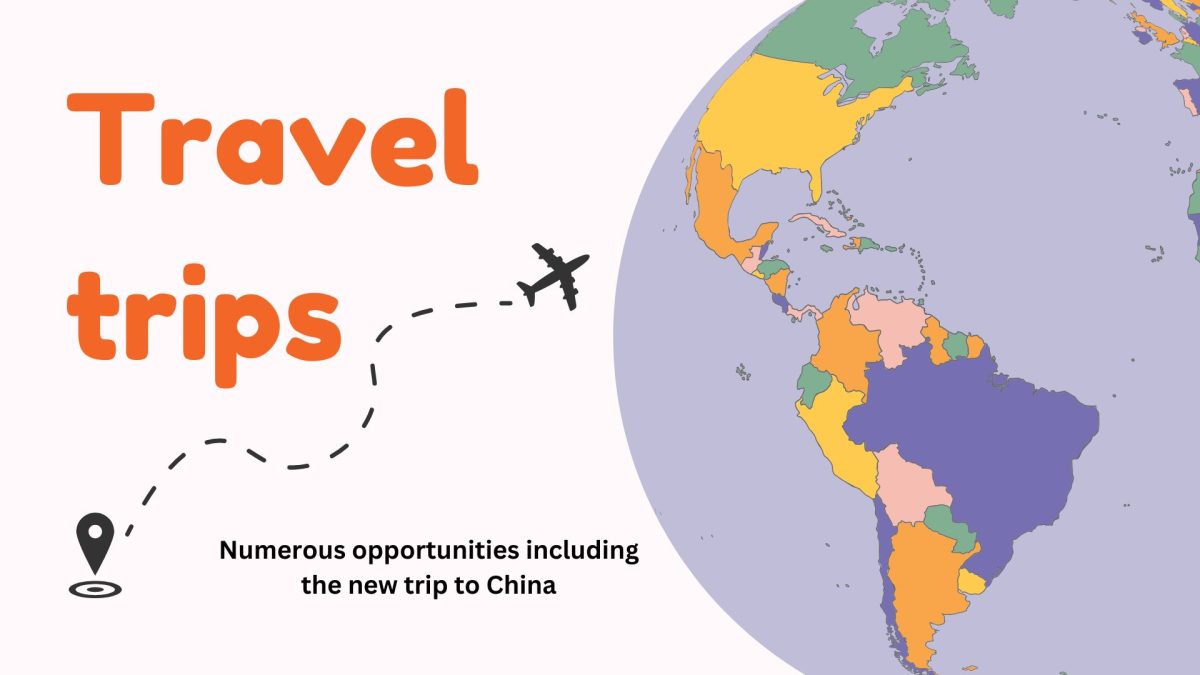‘Tears of the Kingdom’ brings new abilities and franchise continuation

The cover image of the game depicts Link standing at the edge of a sky island.
In 2017, Nintendo released their newest console, the Nintendo Switch. Nintendo’s previous console, the Wii U, provided less than satisfactory results for the company, bringing significantly lower sales than its predecessor, the Wii. The company was hoping the Nintendo Switch would draw people back in. To do this, not only would they have to provide a new idea for a console, but it would also need to be released alongside a new game that would make the console worth buying for their audience.
At the time, Nintendo had been developing a new entry into their 31-year-old franchise, “The Legend of Zelda,” entitled, “The Legend of Zelda: Breath of the Wild” for the Wii U. In an effort to promote the Switch, Nintendo made the decision to port, “Breath of the Wild” from the Wii U to the Switch. This solved their previous issue of releasing a game alongside the Switch, and granted them the results they were hoping for, with the Switch selling 2.74 million units within their first month. Along with the switch sales, “Breath of the Wild” sold $2.76 million for the Switch.
“Breath of the Wild” is an open world game where you play as Link, the protagonist across every “Legend of Zelda” game. He was put into a 100 year sleep to survive the catastrophe brought onto The Kingdom of Hyrule by the game’s antagonist, Ganon.
After the release 6 years ago, they have since teased a highly anticipated sequel to “Breath of the Wild,” and it was released as “The Legend of Zelda: Tears of the Kingdom” on May 12.
Many changes have been made to the story and to the gameplay, as well as the environment of Hyrule. Numerous floating islands and platforms doubled the original size of the world compared to its predecessor. These sky islands feature new enemies, items, and introduce the player to a myriad of new mechanics.
Very few of the mechanics in “Tears of the Kingdom” are returning from “Breath of the Wild,” as the sequel features an entirely new batch of abilities. The rune mechanics in “Breath of the Wild” were integral to the gameplay, more than half of all shrines and puzzles entirely themed around their usage. The rune mechanics in “Tears of the Kingdom” are similar, but different to its predecessor.
The game focuses on a peculiar element that was not at all utilized within the first game. Two of the new runes prioritize creation and player creativity. The first rune, fuse, allows players to combine items around the world or within their inventory to make weapons stronger. For example, one would be able to combine a stick and a boulder to make a powerful club, or an arrow and an eyeball to make it a homing arrow. There are a number of possibilities the fuse ability opens up, given the amount of items and weapons that could possibly be combined.
The second new rune follows a mechanic that was slightly existing in “Breath of the Wild,” that being building structures. With the new Ultrahand ability, the player is able to create structures with more function than simply hobbled together blocks and metal pieces like in “Breath of the Wild.” The Ultrahand ability allows the player to combine various different components into a vehicle. A few examples would be a flying machine, a boat, a stone chariot to ride into battle. This ability adds a completely new level of depth to the game that wasn’t present before.
The final two runes are movement based, giving the player new ways to traverse the world of Hyrule with ease. The first is Rewind, an ability that allows players to rewind objects’ movements. For example, if a stone were to roll down a hill, the Rewind ability would roll the stone back up the hill. It is this ability that allows the player to access the new sky islands because a player can rewind giant stone rocks that fall from them.
The second of these movement abilities is called Ascend, which allows Link to go through ceilings of locations he’s in, and appear on top in an open space. Be it under a house or deep within a cave, the player can ascend through the terrain and pop out in an open space above. This ability is highly useful due to the amount of places in “Breath of the Wild” that could have made use of this. Often there have been areas where Ascend would have been useful in the first game. And with many of these areas returning in “Tears of the Kingdom,” this new ability will be very appreciated.
“Tears of the Kingdom” brings back one of the Zelda franchise’s most evil characters, the villainous Ganondorf. If this name sounds familiar, that is because he is the mortal form of the previously mentioned Ganon. Usually, Ganondorf typically transforms into Ganon at the climax of the game based on previous games. “Tears of the Kingdom” actually breaks this formula, with Ganondorf’s character being revealed after Ganon.
With the return to the Hyrule fans fell in love with back in 2017, “Tears of the Kingdom” brings to the table a whole new formula unlike any other in the Zelda timeline. Nintendo has spent a lot of time and effort on this project, and it is currently available for purchase for $70 in stores, and on the Nintendo Eshop.
Your donation will support the student journalists of West Linn High School. Your contribution will allow us to continue to produce quality content by purchasing equipment, software, and continuing to host our website on School Newspapers Online (SNO).

Jack Deason, junior, is reporting for wlhsNOW for the first time. He writes in his freetime, plays video games with his friends, and has very passionate...


























![Game, set, and match. Corbin Atchley, sophomore, high fives Sanam Sidhu, freshman, after a rally with other club members. “I just joined [the club],” Sidhu said. “[I heard about it] on Instagram, they always post about it, I’ve been wanting to come. My parents used to play [net sports] too and they taught us, and then I learned from my brother.”](https://wlhsnow.com/wp-content/uploads/2024/03/MG_7715-2-1200x800.jpg)





![The teams prepare to start another play with just a few minutes left in the first half. The Lions were in the lead at halftime with a score of 27-0. At half time, the team went back to the locker rooms. “[We ate] orange slices,” Malos said. “[Then] our team came out and got the win.”](https://wlhsnow.com/wp-content/uploads/2023/10/IMG_2385-1200x800.jpg)





![At the bottom of the third inning, the Lions are still scoreless. Rowe stands at home plate, preparing to bat, while Vandenbrink stands off to the side as the next batter up. Despite having the bases loaded, the team was unable to score any runs. “It’s just the beginning of the season. We’re just going to be playing out best by June, [and] that’s where champions are,” Rowe said.](https://wlhsnow.com/wp-content/uploads/2024/03/IMG_3077-1200x900.jpg)











































































